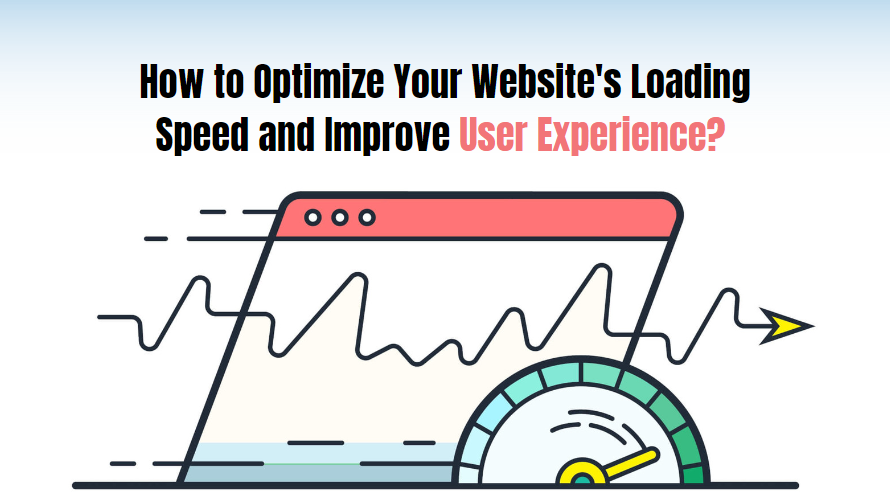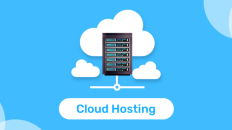A website is the backbone of any business. It’s a platform where businesses can showcase their products, services, and brand. However, having a website alone isn’t enough; it’s equally important to have a website that loads quickly and provides a smooth user experience.
In fact, website loading speed is one of the most critical factors that determine the success of a website. Slow-loading websites are frustrating, and users are likely to abandon them quickly, leading to a high bounce rate and a negative impact on search engine rankings.
In this blog post, we’ll discuss how to optimize your website’s loading speed and improve user experience.
Table of Contents
- Optimize images
- Minimize HTTP requests
- Enable browse caching
- Minify CSS and JavaScript files
- Use Content Delivery Networks (CDNs)
- Use a reliable hosting provider
- Remove unnecessary plugins and add-ons
- Use a content management system (CMS)
- Optimize the website’s code
- Use a fast DNS provider
- Optimize your server response time
- Test your website’s loading speed
- Conclusion
Optimize Images
Images are an essential component of any website. However, large image sizes can significantly slow down your website’s loading speed. The key is to use the right image format and compress images without compromising on quality. JPEG is the most widely used image format for photographs, while PNG is ideal for graphics with transparent backgrounds.
In addition, there are many online tools available, such as TinyPNG and Compressor.io, which can compress images without losing quality. It’s also important to use the appropriate image size for your website. If your website requires images to be displayed at a maximum width of 1000 pixels, there’s no point in uploading images that are 3000 pixels wide.
Minimize HTTP Requests
When a user visits your website, the browser sends an HTTP request to the server to retrieve the web page’s HTML, CSS, and JavaScript files. The more requests the browser has to make, the longer it takes for the website to load.
To minimize the number of HTTP requests, you can:
- Combine multiple CSS and JavaScript files into one.
- Use CSS sprites to combine multiple images into one file.
- Use lazy loading for images and videos that are not visible on the screen.
Enable Browser Caching
Browser caching allows the browser to store frequently accessed files, such as CSS and JavaScript, on the user’s computer. When the user visits your website again, the browser can retrieve these files from the cache instead of requesting them from the server, which significantly reduces the loading time.
To enable browser caching, you can set an expiration date for your files in the HTTP headers. This tells the browser how long to keep the files in the cache before requesting them again from the server.
Minify CSS and JavaScript Files
Minification is the process of removing unnecessary characters, such as white space and comments, from CSS and JavaScript files. This reduces the file size and speeds up the loading time. There are many online tools available, such as CSS Minifier and JS Compressor, that can minify your files in seconds.
Use Content Delivery Networks (CDNs)
A Content Delivery Network (CDN) is a network of servers located in different parts of the world. When a user visits your website, the CDN automatically delivers the website’s files from the server closest to the user’s location, which significantly reduces the loading time.
CDNs are especially useful for websites that have a global audience. Some popular CDNs include Cloudflare, Amazon CloudFront, and MaxCDN.
Use a Reliable Hosting Provider
Your website’s loading speed is also affected by the hosting provider you choose. A reliable hosting provider ensures that your website is always up and running and provides fast loading speeds. It’s important to choose a hosting provider that offers a high uptime guarantee and fast server response times.
Remove Unnecessary Plugins and Add-ons
Plugins and add-ons can significantly slow down your website’s loading speed, especially if they’re not optimized correctly. It’s essential to review your plugins regularly and remove any unnecessary ones. If a plugin is necessary, make sure it’s optimized correctly to minimize its impact on the website optimization tips:
Use a Content Management System (CMS)
Using a content management system (CMS) like WordPress or Drupal can help optimize your website’s loading speed. These CMSs have many built-in features that are designed to speed up your websites, such as caching, minification, and optimization plugins.
In addition, they offer many templates and themes that are optimized for speed, making it easier for you to create a fast-loading website.
Optimize Your Website’s Code
Optimizing your website’s code is another effective way to speed up your website’s loading time. You can optimize your code by:
- Removing unnecessary code, such as unused CSS and JavaScript files.
- Minimizing the use of external scripts and stylesheets.
- Using CSS instead of images where possible.
- Avoiding nested tables and unnecessary divs.
- Using server-side scripts, such as PHP, instead of client-side scripts, such as JavaScript, where possible.
Use a Fast DNS Provider
A Domain Name System (DNS) is responsible for translating your website’s domain name into an IP address, which is used to access the website. The DNS provider you choose can significantly impact your website’s loading time.
A slow DNS provider can cause delays in resolving your website’s domain name, leading to a longer loading time. It’s important to choose a fast DNS provider, such as Google DNS or Cloudflare DNS, to ensure fast loading times.
Optimize Your Server Response Time
Your website’s server response time is the time it takes for your server to respond to a user’s request. A slow server response time can significantly impact your website’s loading speed.
To optimize your server response time, you can:
- Use a dedicated server instead of shared hosting.
- Use a content delivery network (CDN) to reduce the distance between the user and the server.
- Use caching to store frequently accessed data on the server.
- Optimize your database to reduce query times.
Test Your Website’s Loading Speed
Testing your website’s loading speed regularly is essential to ensure that it’s optimized for speed. There are many online tools available, such as Google PageSpeed Insights and GTmetrix, that can help you test your website’s loading speed and provide suggestions on how to improve it.
These tools also provide valuable insights into how your website performs on different devices and in different locations.
Conclusion
Optimizing your website’s loading speed is essential for providing a smooth user experience and improving your website’s search engine rankings. By following the tips mentioned above, you can significantly improve your website’s loading speed and provide a fast and reliable user experience.
Remember, a fast-loading website not only benefits your users but also your business by increasing conversions and reducing bounce rates.
Click for More articles: https://blog.hostingshouse.com/








Add comment